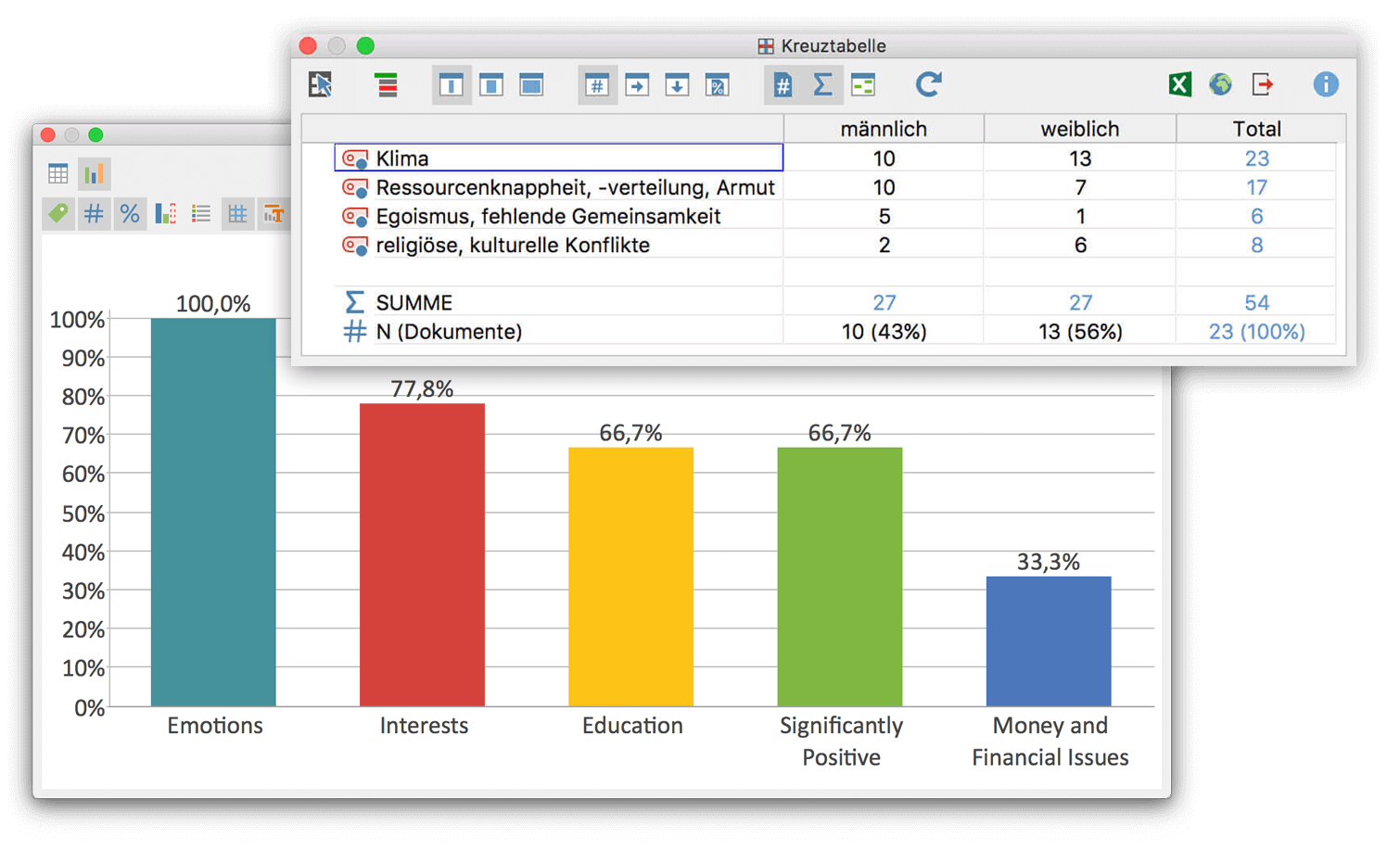

- #Maxqda quantitative analyse how to
- #Maxqda quantitative analyse pdf
- #Maxqda quantitative analyse software
- #Maxqda quantitative analyse code
#Maxqda quantitative analyse code
To combine documents with certain variable values in a document set, you can use the Activate by Document Variables function.Ī group comparison for code frequencies is performed as follows: Powerful, yet intuitive, this tool will help you to manage your whole research project.
#Maxqda quantitative analyse software
This chapter on quantitative data therefore focuses on the comparison of code frequencies.Ī prerequisite for performing a case or group comparison is that groups exist in your “Document System”, either as document groups, document sets or as individual documents. MAXQDA is professional software for qualitative and mixed methods data analysis. The MAXQDA function Compare Cases & Groups allows you to easily compare coded data (qualitative data) and code frequencies (qualitative data transformed into quantitative data). In MAXQDA there are numerous possibilities to compare the data material, for example to display only the statements of certain groups of persons in the “Retrieved Segments” or to compare visualizations, such as Document Portraits, for different cases.
#Maxqda quantitative analyse pdf
An open-access version can be downloaded in PDF format for free.The comparative analysis of cases and groups is one of the most important techniques of qualitative research. The book is available on the MAXQDA Press website.
#Maxqda quantitative analyse how to
In the final step, we give hints on how to write up your results and how to ensure transparency in documenting your analysis process. Step 6: Write the research report and document the analysis process This step addresses the question: How to proceed after coding? Here, we present several analysis options for the coded data available in MAXQDA, such as the visual tools or the tools for case and group comparisons. Category by category, the coded text segments are systematically processed: if necessary, sub-categories are created, and the data is “fine” coded in a second coding cycle. Now you continue the coding process and work on the category system. MAXQDA is at once powerful and easy-to-use, innovative and user-friendly, as well as the only leading QDA software. You will get a practical overview of how to manage, code, and analyse different types of qualitative data, and report findings using MAXQDA. Analyze all kinds of data from texts to images and audio/video files, websites, tweets, focus group discussions, survey responses, and much more. This course offers an applied introduction to MAXQDA, an easy-to-use tool for qualitative and/or mixed methods data analysis, now available as a universal application for Windows and Mac OS. Step 4: Develop your category system further and the second coding cycle (“fine coding”) MAXQDA is a world-leading software for qualitative and mixed methods data analysis. We call the first coding cycle “basic coding” in which you apply broad codes to the interview transcripts. In steps 3 and 4, the focus is on coding.

Step 3: Code your interviews (“basic coding”) Furthermore, you learn which criteria categories should fulfill. Here you develop your initial analysis categories using the interview guide as a starting point. This paper is a written version of a pres entation given at the CentrA Seminar on ad. This has resulted in a great deal of experience, including experience in how the essential procedures for interview analysis can be taught successfully in a relatively short period of time. Step 2: Develop categories for your analysis the problem of teaching analysis procedures for qualitative intervi ews and their prac-tical implementation with MAXQDA in a one - or two -day workshop. You start your analysis by exploring the data, particularly by intensive reading of the interviews and writing initial memos and case summaries. In the beginning, the data is prepared and then imported and organized in a MAXQDA project. Step 1: Prepare, organize, and explore your data


 0 kommentar(er)
0 kommentar(er)
